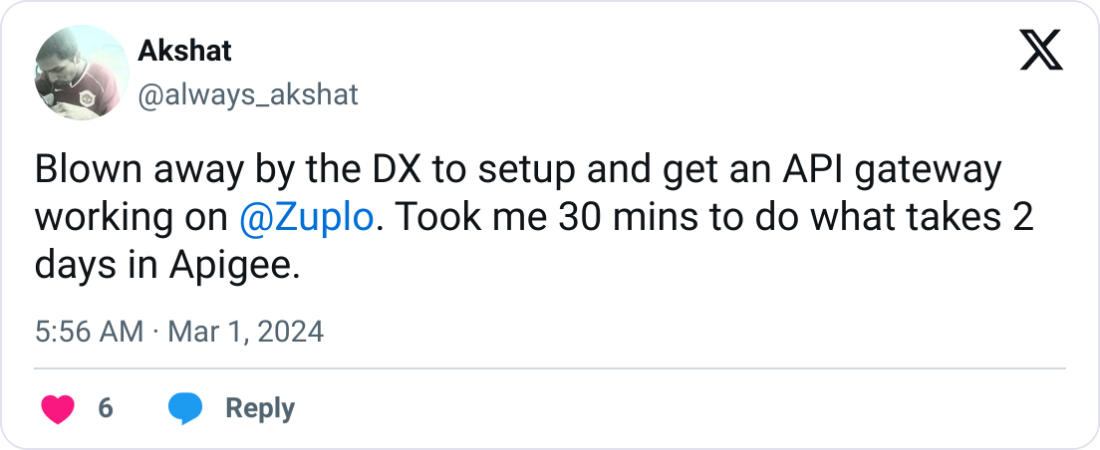APIs aren't just for tech teams anymore — they've become the secret weapons transforming how forward-thinking banks compete and win. Today, these powerful connectors have become strategic assets that smart institutions use to outpace competitors, tap into fresh revenue streams, and create the seamless digital experiences customers now expect.
Let’s look at the numbers. According to McKinsey, 67% of banking executives now consider APIs a top priority, elevating them from the server room to the boardroom. This shift is accelerating, with estimates suggesting 40% of financial transactions will flow through non-financial platforms powered by financial APIs by 2026. Need more proof? 89% of banks now view fintechs as strategic partners rather than competitors—partnerships made possible through secure, well-designed API connections.
With this dramatic shift in mindset among banking leaders, the question isn't whether to embrace APIs, but how to implement them effectively. Let's explore how your financial institution can harness APIs to drive innovation, meet regulations, create new revenue streams, and deliver exceptional experiences your customers will love.
- Money in the Bank: The Business Case for Financial APIs
- Blueprint for Success: Core Components of a Winning Financial API Strategy
- Four Steps to API Excellence: Your Implementation Roadmap
- Breaking Down Walls: Bridging Business-IT Alignment
- Future-Ready: Anticipating Tomorrow's API Landscape
- Building an API-Driven Culture in Financial Services
- Your Roadmap to API Excellence: Next Steps
Money in the Bank: The Business Case for Financial APIs#
Legacy systems are gasping for air as they struggle to meet demands for real-time services. A strategic API approach serves as the essential bridge between these dinosaur systems and modern applications, enabling innovation without requiring a complete tech overhaul.
Regulatory compliance isn't just a headache—it's a migraine that never ends. But here's the good news: well-designed APIs can automate compliance processes, reducing manual oversight and human error while quickly adapting to regulatory changes. This translates directly to cash savings and significantly reduced compliance risk.
Security concerns often make banks hesitate about open banking initiatives, but here's the plot twist—strategic API implementations actually enhance protection by creating controlled access points with robust authentication, letting you participate in broader ecosystems while keeping your data fortress impenetrable.
When building your business case for API investments, focus on these money-making metrics:
- Slashing Time-to-Market: APIs cut development cycles by up to 75%, getting your financial products to customers while competitors are still planning
- Dramatically Reducing Integration Costs: A solid API strategy connects your systems for a fraction of the cost of custom integrations
- Boosting Customer Acquisition and Retention: APIs enable the seamless experiences customers demand today—and they'll abandon your business without them
- Cutting Compliance-Related Costs: Automated compliance through APIs means fewer manual checks and fewer penalties
The proof is in the results. JP Morgan Chase implemented standardized APIs that reduced customer onboarding time by 75%, while Goldman Sachs launched Banking-as-a-Service APIs that transformed their business model while reducing costs by 72%.
Blueprint for Success: Core Components of a Winning Financial API Strategy#

Creating an effective API strategy isn't about throwing code at the wall and seeing what sticks. You need a comprehensive approach that aligns with business goals while addressing financial sector challenges. Here are the four essential ingredients for API domination:
Align and Govern: Connecting Tech to Business Value#
Your API initiatives must directly connect to specific business objectives. Establish clear ownership (nobody likes an orphan project) and focus success metrics on business outcomes that matter, like how payment APIs slash processing times or how data APIs expand your partner ecosystem.
Consider creating an API Center of Excellence bringing together technical and business stakeholders. Capital One excels here with a governance structure maintaining strict security and compliance controls while promoting innovation, allowing them to launch new financial products at speed while maintaining trust.
Cash Flow: Monetization Models That Work#
Your API strategy should include clear plans for creating both direct and indirect value. For direct revenue, implement premium API tiers, transaction-based pricing models, or explore other monetization strategies for fintech APIs. Don't overlook indirect value creation either—APIs can dramatically expand your partner ecosystem, enabling new distribution channels without direct monetization.
Mastercard's approach is the gold standard in strategic API monetization. Their Mastercard Developers platform offers various APIs for payments, security, and data services, building relationships with thousands of partners while generating both direct revenue through premium APIs and indirect value through increased transaction volume. Additionally, financial institutions can unlock new revenue streams by monetizing proprietary data through APIs, offering unique insights to partners and customers.
Fortress: Security & Compliance by Design#
Financial APIs demand multi-layered security—no shortcuts! Implement strong authentication mechanisms like OAuth 2.0 with additional security layers such as IP whitelisting, rate limiting, and anomaly detection to protect sensitive data.
Your compliance framework should address data sovereignty requirements, ensuring customer data remains in appropriate jurisdictions. Build compliance directly into your API design process with documentation supporting auditing requirements. Stripe, for instance, brilliantly balances robust security with developer experience, implementing industry security standards while providing detailed error messages that help developers resolve issues quickly without compromising security.

Over 10,000 developers trust Zuplo to secure, document, and monetize their APIs
Learn MoreArchitecture: Building for Tomorrow#
- Your API architecture should include a gateway strategy that manages access, monitors usage, and enforces security policies consistently. Leveraging a hosted API gateway can provide these benefits without the overhead of building and maintaining your own infrastructure.
- Consider how microservices can work within regulatory constraints, allowing for modularity while maintaining compliance, perhaps utilizing smart routing for microservices to optimize performance and reliability.
- Balance standardization with customization for specific business needs, and develop clear versioning strategies that allow evolution without disrupting existing integrations—breaking changes is the fastest way to lose developer trust.
Four Steps to API Excellence: Your Implementation Roadmap#
Implementing a successful API strategy requires a structured approach balancing innovation with regulatory and security requirements. Follow this four-phase roadmap tailored for financial services:
Phase 1: Assess & Strategize#
Start with a comprehensive API maturity assessment evaluating your current capabilities. Identify high-value API opportunities like payment processing, account aggregation, or compliance reporting that deliver clear business benefits.
Map your existing systems and data flows to understand integration points, particularly with legacy core banking systems. Build a strong business case with financial-specific KPIs like cost per transaction, time-to-market for new products, and compliance efficiency gains.
Phase 2: Design & Develop#
Create APIs addressing specific financial use cases with consistent patterns for common banking functions. Selecting appropriate standards and mastering API definitions is crucial—whether using REST for customer-facing services or specialized standards like ISO 20022 for payment messaging. Tools for generating OpenAPI specifications from existing databases can accelerate this process.
Prioritize excellent developer experiences with comprehensive documentation, sandbox testing environments, and sample code. DBS Bank provides a valuable reference point, establishing standardized design guidelines while allowing flexibility across retail, corporate, and wealth management divisions.
Phase 3: Deploy & Scale Strategically#
Implement a progressive rollout strategy to minimize risk—start with internal APIs before exposing them to partners or customers. Establish rigorous testing protocols verifying financial data integrity, including negative testing simulating fraudulent activities.
Address performance considerations for high-volume financial transactions, especially for time-sensitive operations like real-time payments or trading. One mid-sized bank grew from 5 APIs to over 500 in three years by starting with core banking functions before gradually expanding—a phased approach that built capabilities while managing risk.
Phase 4: Measure & Optimize Continuously#
Establish key performance indicators specific to financial services. Beyond standard technical metrics, track business outcomes like new account openings via API channels, transaction volumes, and revenue through partner integrations.
Create feedback loops with API consumers, especially those developing financial applications. American Express offers a great example with their comprehensive dashboard tracking not just API uptime but also business metrics like customer acquisition costs and partner satisfaction scores.
Breaking Down Walls: Bridging Business-IT Alignment#

Even the most technically brilliant API strategy will crash and burn if your business and IT teams are operating in separate universes. Financial services face a particularly tough challenge here: complex technical systems collide with strict regulations, while business folks are laser-focused on customer experience and revenue. An API integration platform can help bridge this gap by centralizing management and fostering collaboration.
Establish Cross-Functional API Teams#
You know the drill — traditional banking structures put business and IT in completely different silos with misaligned incentives and success metrics. That approach is a recipe for disaster in today's API economy.
Instead, bring together diverse talents with shared skin in the game. Your dream team should blend business strategists who understand market opportunities, product managers who translate business needs into technical requirements, developers who build the solutions, and compliance specialists who keep you out of regulatory hot water. When everyone shares ownership of API outcomes, products launch faster and your competitive edge gets sharper.
Develop a Common API Language#
Ever sat in a meeting where the tech team might as well be speaking Klingon while the business folks respond in Elvish? That communication gap kills progress before it starts.
Help your IT team articulate API value in terms business leaders actually care about — revenue generated, customer retention improvements, and efficiency gains. Meanwhile, help your business teams grasp technical concepts by connecting them directly to business goals they understand. When both sides share vocabulary, you'll spend less time in translation and more time innovating.
Implement Collaborative API Governance#
Finding the sweet spot in governance is tricky. Too much control from IT, and innovation suffocates. Too much business-led chaos, and you risk security nightmares.
Create a balanced approach where everyone has a seat at the table — business leaders setting strategic direction, technical teams assessing what's feasible, and compliance ensuring regulatory alignment. This approach gives you clear decision-making processes for prioritizing APIs, establishing design standards, and implementing security requirements that keep everything aligned as market conditions shift.
Leverage Visualization Tools#
Nothing makes a business leader's eyes glaze over faster than abstract technical concepts. Turn those complex API interactions into visual stories that clearly demonstrate business impact.
Good visualization tools transform API data into intuitive dashboards showing usage patterns, revenue attribution, and performance against business KPIs. These visual tools help business leaders grasp technical concepts while letting IT teams demonstrate their direct contribution to business outcomes.
Create Centers of API Excellence#
A dedicated hub of API expertise can dramatically speed up alignment between business and IT teams. Think of it as your API embassy - a central place where technical capabilities connect with business opportunities.
Your Center of Excellence becomes the keeper of standards and best practices, offers consultation to business units, shares success stories, and provides training for both technical and non-technical teams. With this approach, you'll transform APIs from technical plumbing into strategic business assets with clear alignment across your organization.
Future-Ready: Anticipating Tomorrow's API Landscape#
Your API strategy must anticipate where financial services are heading next. Let's explore the emerging trends that will separate leaders from followers in the years ahead.
Event-Driven Architectures Transform Real-Time Finance#
If you're still using request-response patterns for time-sensitive operations, you're falling behind. Modern financial APIs use event-driven architectures that respond instantly to transactions, market movements, and customer behaviors, creating experiences that feel genuinely immediate while reducing fraud exposure.
AI Integration Becomes Non-Negotiable#
Forward-thinking institutions connect core systems to specialized AI services through well-designed APIs. This approach lets you leverage best-in-class AI capabilities without rebuilding your infrastructure, reducing compliance costs while potentially creating new revenue streams from your own AI models.
Blockchain Access Reshapes Transaction Models#
Blockchain is evolving from buzzword to business reality. Your strategy should include interfaces for both public and private blockchains that provide secure verification while hiding complexity from users, giving you flexibility to adapt as standards evolve.
Embedded Finance Goes Mainstream#
Today's customers expect financial capabilities woven seamlessly into everyday experiences. You need APIs designed specifically for non-financial partners, with simplified compliance handling and contextual authentication that maintains security without adding friction.
Regulatory Flexibility Becomes Competitive Advantage#
From PSD3 to open banking initiatives, new regulations keep coming. Build your APIs with modular architectures that adapt quickly to requirements. Banks with flexible foundations implement regulations months faster than competitors, turning compliance into market advantage.
Privacy-Enhancing Technologies Go Mainstream#
Modern API strategies incorporate sophisticated privacy tools like confidential computing and zero-knowledge proofs. These let you share insights without exposing underlying data, enabling collaboration while maintaining the ironclad protection financial customers expect.
Building an API-Driven Culture in Financial Services#
Creating lasting API success demands an organization-wide cultural shift. Financial institutions must embrace APIs as strategic business assets driving innovation and competitive advantage:
- Executive Sponsorship Is Critical: Secure leadership buy-in to ensure APIs remain a strategic priority. When leaders champion the API vision and actively promote APIs, resources and attention naturally follow.
- Break Down Silos: Foster collaboration between technology and business teams. According to McKinsey, successful API implementations depend on dialogue between IT and business stakeholders to demonstrate clear value.
- Embrace API-First Thinking: Consider APIs from the inception of any new product or service, not as an afterthought. This puts interoperability and scalability at the center of your business strategy.
- Measure What Matters: Track how APIs contribute to customer acquisition, retention, and satisfaction rather than focusing solely on technical metrics. Monitor ecosystem growth and innovation velocity to gauge long-term success.
- Keep Your Team Prepared: Invest in talent development, create API champions across departments, and foster a culture of experimentation that allows teams to test new API-enabled services in controlled environments.
Your Roadmap to API Excellence: Next Steps#
The API revolution in financial services isn't coming—it's already here. Forward-thinking institutions aren't just using APIs as technical tools—they're leveraging them as strategic assets transforming their entire business models. To succeed in this new landscape, build an API strategy that balances innovation with the unique requirements of financial services. Focus on clear business alignment, robust security and compliance, excellent developer experiences, and scalable architecture that can evolve with your business needs.
Ready to transform your financial institution with a modern API approach? Zuplo's programmable API gateway provides the perfect foundation—simplifying implementation, enhancing security, and accelerating time-to-market without the overhead of building infrastructure from scratch. Sign up for a free Zuplo account today and start building the API program that will keep you ahead of the competition.